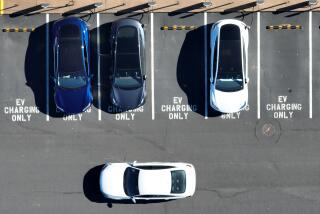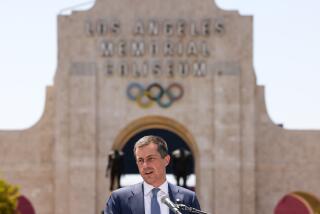Pure Manna From on High : A very welcome federal transit bill to get California moving again
More than ever, the federal government is saying it cares more about whether people can get to and from work in urban areas than about how they do it.
That message is sprinkled all through the mammoth transportation bill that Congress cleared last week that gives states a new freedom to choose among transit systems, highways and even bike paths in using federal funds.
Over the course of six years it would invest $151 billion in mass transit. Although it gives states more options than President Bush wanted, he is expected to sign the bill.
For Southern California, with billions of its own dollars already committed to greater use of rail, the shift away from funding that favors highways is pure manna from on high.
California will get more than $15 billion of the national total, representing a return of more than 90% of the federal gasoline taxes that Californians pay, compared to the recent return of 85%. For metropolitan Los Angeles, it also is a challenge to merge its two bickering transit agencies next week in ways that will get the most out of every federal dollar.
The bill will make it easier for Orange County to plan the toll roads it sees in its future, although rules of construction are tightly drawn.
San Diego will get new funds for its trolley system, for a new state highway in Oceanside, for completion of Interstate 15 and for improving its train links to Los Angeles.
With government budgets shrinking at all levels, the highway program will actually allow transportation construction to grow, although its most important financial implication probably is that programs will not be killed. Without the new funds, for example, $450 million worth of transportation projects might have been put on hold.
In the long run, though, the most valuable elements are those that will allow Southern California to choose the modes of transportation that can best get people from here to there. It will give all states a chance to create transportation patterns that more closely match patterns of growth and development, more effectively replace gridlock with mobility.
The big winner will be the Los Angeles Metro Rail and what county planners say will be a 400-mile network of heavy and light rail linking Los Angeles with Orange, Riverside, San Bernardino and Ventura counties and eventually San Diego County. That’s an exciting prospect indeed.
The $151-billion declaration by the federal government of its deep interest in improving this nation’s transit infrastructure is one of the great, if extremely rare, political achievements in Washington this year.
More to Read
Sign up for Essential California
The most important California stories and recommendations in your inbox every morning.
You may occasionally receive promotional content from the Los Angeles Times.










